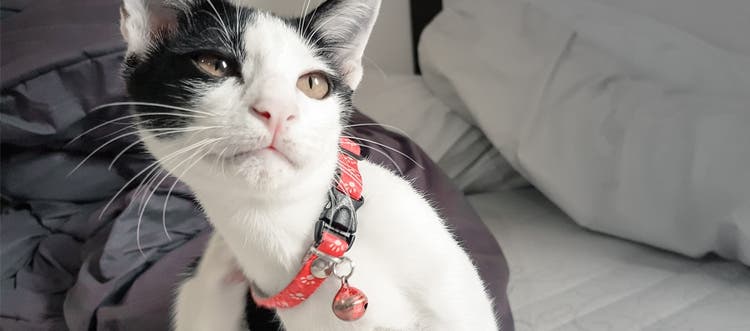What you need to know about cats and exercise.
It’s no surprise that indoor cats tend to get much less exercise than outdoor cats. But exercise and play are critical to the overall well-being of all cats.
It’s important to find opportunities to let your house cat tap into their natural animal instincts with daily play periods. Read on to learn why exercise is important, how you should play with your cat and how to find their favorite activity.
Why Are Exercise and Play Important for My Cat?
Playing with your cat isn’t just an opportunity to bond with them; it’s also a way to keep them healthy so you can enjoy more years together. Pet obesity rates are rising across the United States, so by incorporating exercise into your cat’s daily routine, you can help them maintain their weight, keep their muscles strong and avoid diseases that come with obesity like diabetes and high blood pressure.
In addition to helping them maintain peak physical health, play and exercise also help your cat develop good behavioral habits. Play stimulates your cat in a positive way while preventing them from destroying household items like furniture or plants. It also teaches them the appropriate and inappropriate times to play, and helps keep their mind alert and active, too.
How Much Exercise Do Cats Need?
While your cat’s exercise needs will vary by age, weight and current activity level, it’s generally recommended that you engage your cat in at least three five-minute intense play periods each day.
When you’re playing with your cat, remember: They are predators by nature, and these short, five-minute bursts of activity are comparable to how they would hunt in the wild. Cats — even those who live indoors — were born to climb, jump, hunt and chase. Don’t be afraid to tap into these animal instincts and mimic their natural behaviors as you play.
Ways to Exercise Your Cat
To find out whether your cat prefers climbing or chasing, introduce toys and activities to see which ones they like best. It’s also a good idea to rotate your toy options every couple of days so your cat doesn’t get bored.
Here are a few options many cats enjoy.
- Cat trees: The ideal cat tree reaches from floor to ceiling and is made of different materials like sisal and carpet so your cat can use it to climb and scratch — both great opportunities for exercise.
- Stuffed mice: Your cat will get a workout batting this toy around like prey.
- Feather wands: These toys mimic birds, and cats love hunting birds. As you play, be sure to keep your cat’s interest by moving the feather like a bird would move — fluttering, tumbling and so on.
- Cardboard boxes: Your cat will enjoy being active by hiding in and jumping out of boxes. Plus, chances are you have some at home already.
- Flashlights or laser pointers: Cats love hunting, and a laser or flashlight is an easy way to get them moving. Just be sure that your play session ends with your cat catching their “prey” to avoid any frustration.
- Cat exercise wheel: If your cat is high-energy and you have the space for it, a cat wheel gives them the chance to run and chase.
Although cats love to lounge, regular exercise and play are crucial to their overall health. Whether you already have a routine or are just starting one, remember that your activities should tap into your cat’s natural instincts. There are so many ways to play with your cat, and finding what they love will help keep them active and happy for many years to come.
Related Articles

New Cat or Kitten: Our Downloadable Guide
Thinking about adding a feline to the family? There are so many emotional, social and physical benefits to owning a cat. Check out our free guide, also available to download!





